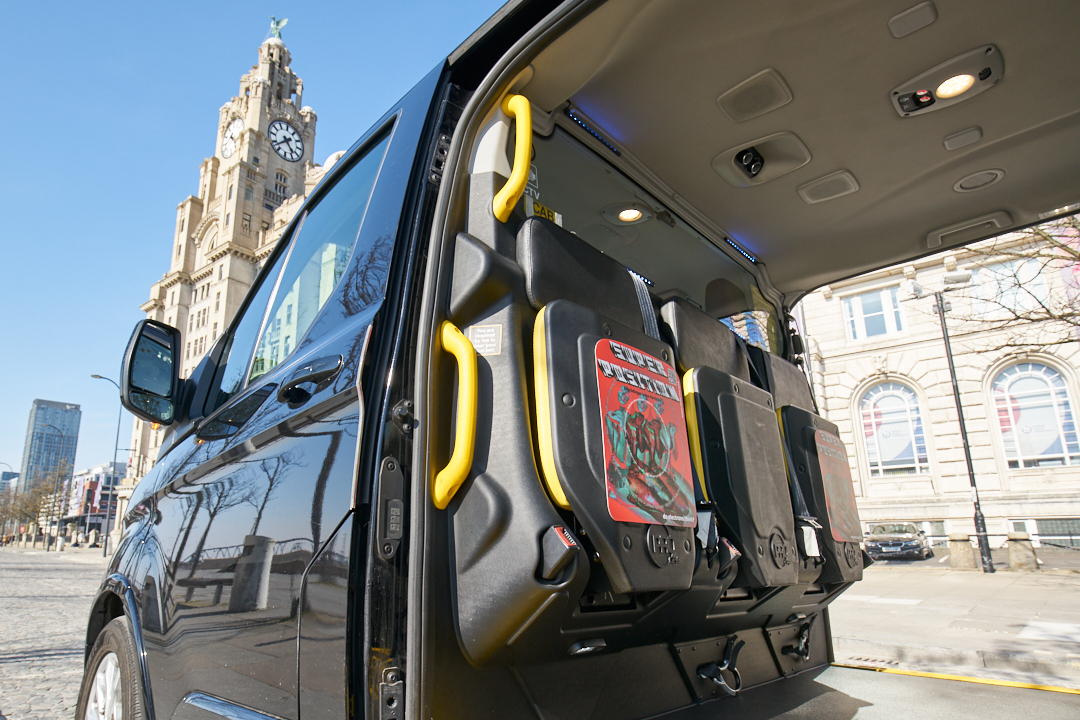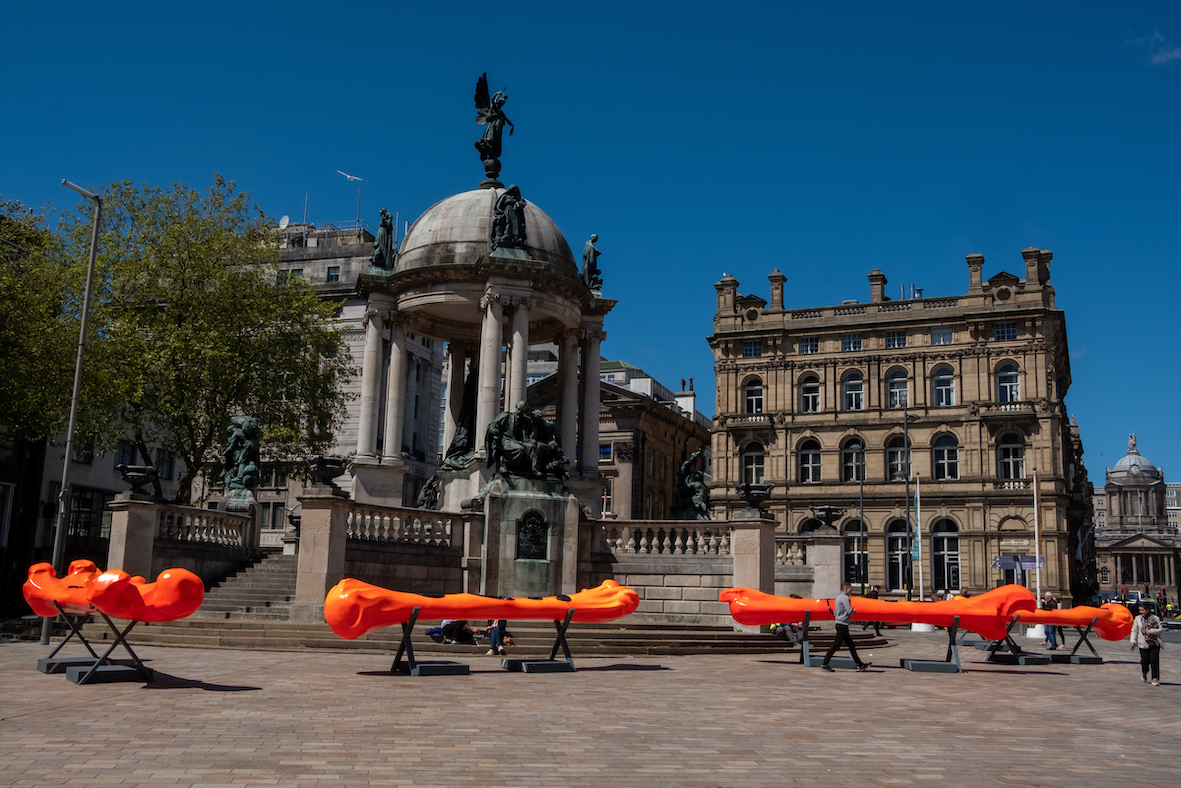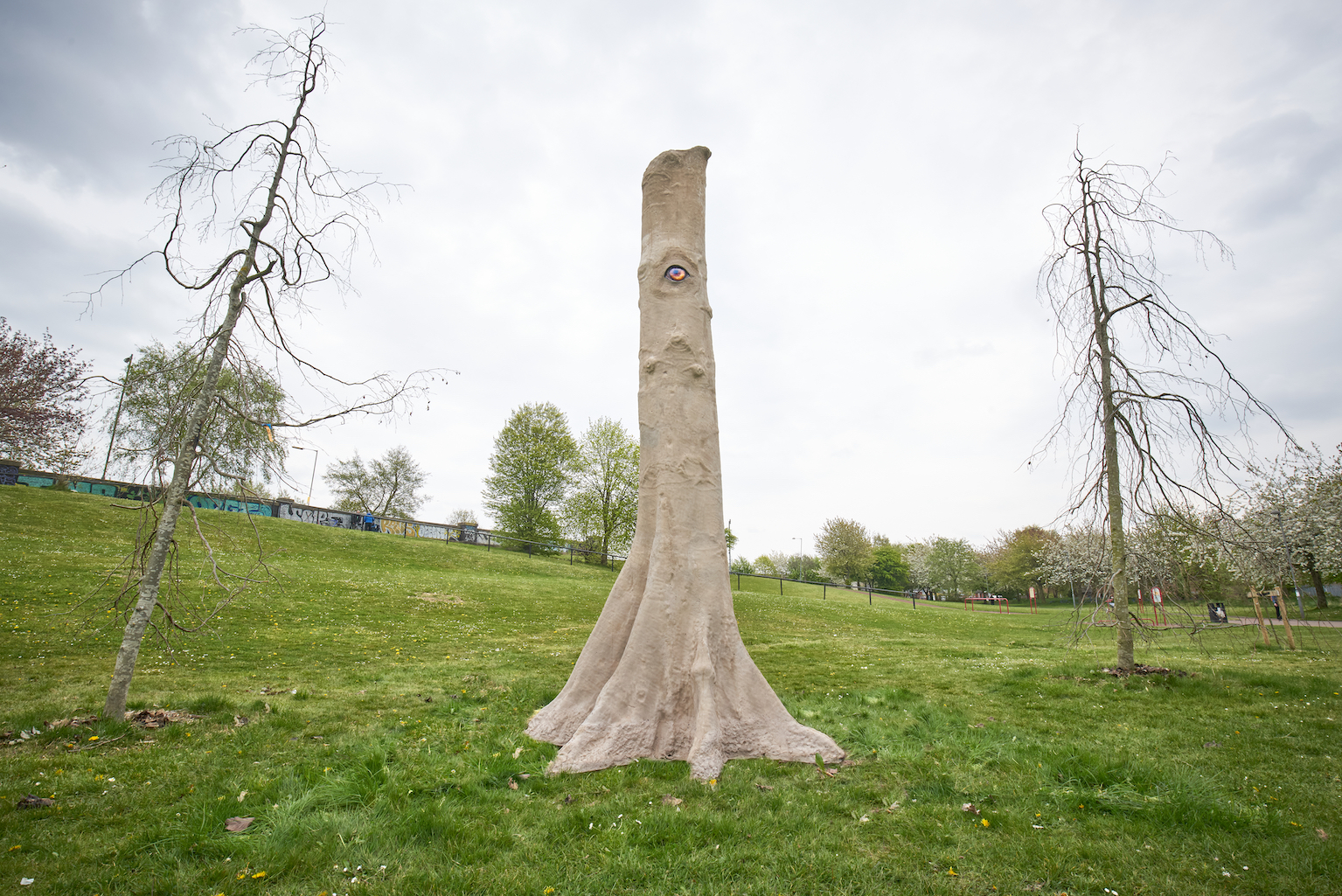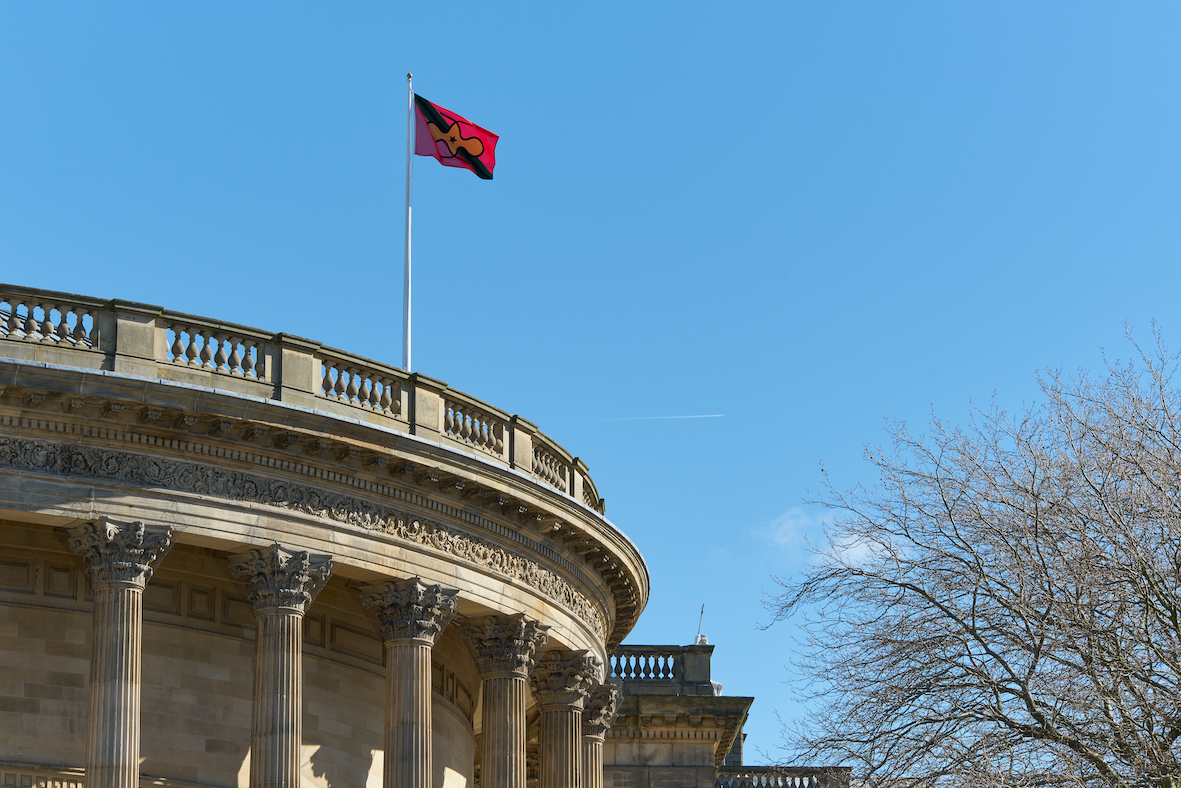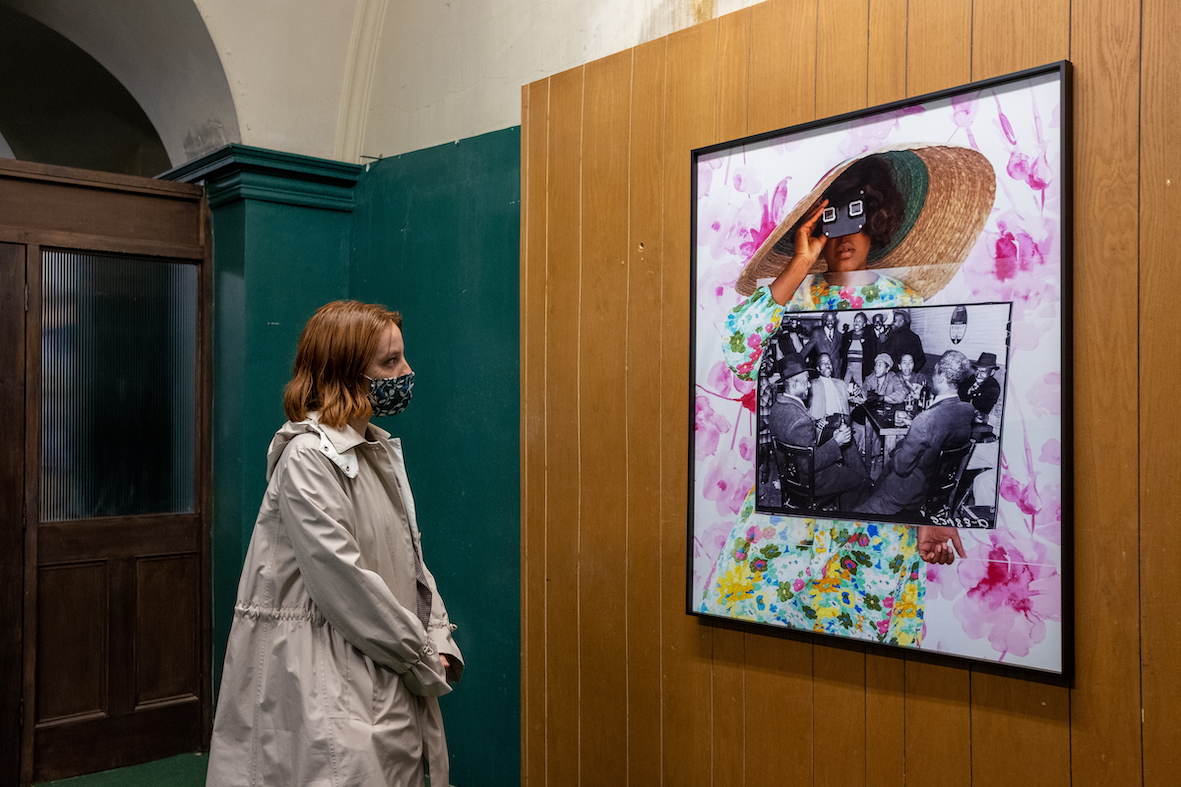The full festival of nine exhibitions for Liverpool Biennial 2021: The Stomach and the Port is now closed.
A dynamic programme of sonic and digital commissions, films, events, podcasts and is still available to explore on this site. Discover here.
Sign up to our newsletter to stay posted for future updates.
You can also buy specially commissioned LB2021 editions and merchandise at our online Shop, and support our work with artists and communities.
In order to keep yourself and everyone around you safe, we suggest all visitors check the FAQs for tips and guidance.



